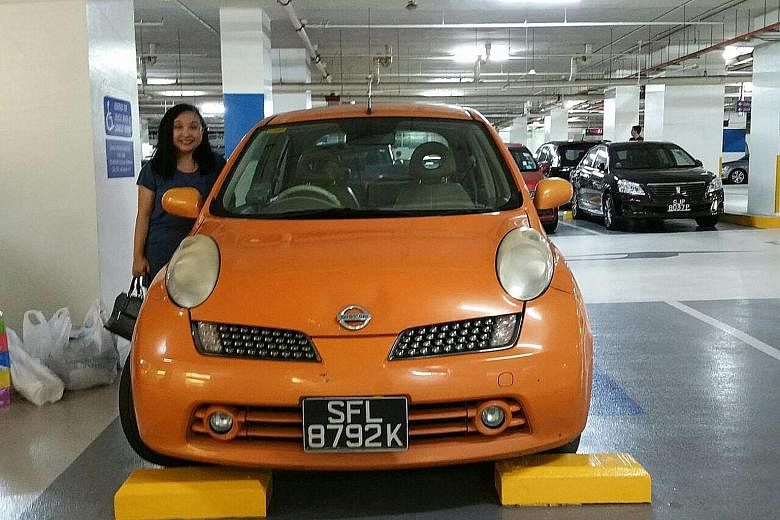Six months ago, I drove my old orange Nissan March, Coco, for the last time. After 25 years as a car owner, Coco and I had reached the end of the road. She went to the scrapyard in the sky (or some say Batam) while I have learnt to love Grab and Uber.
Last weekend, this newspaper reported that more people here are choosing to ditch their cars and take up cycling instead. For me, giving up the car was not a lifestyle choice but a hard financial decision.
In the ideal world, we would all be prepared financially by the time we reach our 50s when we have to pay for our children's university fees or face a more uncertain job future. But more often than not, life turns out differently than expected - we get laid off or divorced, have family members with health problems, or we never really earn enough in the first place to pile up much in the way of savings after expenses.
Before it gets to the stage when you have to consider renting out a room in your flat or downsizing to a smaller unit, you have to start downgrading your life. The car is often the first thing to go.
A personal finance website just came up with a study that showed that taking Uber or Grab rides every day can actually be cheaper than owning a car in Singapore. ValuePenguin found that the cost of owning a car here and using ride-hailing apps daily works out to about the same - $15,000 to $16,000 per year for the average commuter.
ValuePenguin worked out the annual average cost of owning a car as $15,113. This was based on several assumptions: that an average car is driven about 17,500km per year, which is equivalent to roughly four trips of 12km per day, according to a study by the Land Transport Authority of Singapore.
It also assumes an average driver drives a Toyota Corolla Altis 1.6, one of the most popular cars in Singapore, which has a mileage of 6.5 litres per 100km (or 15.4km per litre). The analysis does not take into account the impact of the cost of a car loan or the resale value of the car as these can vary dramatically for each individual but should largely offset each other, it said.
ValuePenguin calculated the equivalent annual cost of using Grab or Uber daily to be $15,760 and $16,455 respectively, without discounts. This assumes 1,460 annual trips, which is about four trips per day and 12km per trip, in line with the private car average.
But taking Grab and Uber every day can be more than 10 per cent cheaper on average than owning a car when you take into account parking costs versus ride-hailing firms' incentive programmes and promotions, said ValuePenguin. It really all comes down to car prices here being the highest in the world while the fierce competition between Grab and Uber means lower fares and many discounts for customers.
So, theoretically, ditching the car and riding Grab and Uber every day saves you money. But what if you want to save more than 10 per cent while moving a whole family every day and not just one person? Then of course going full Grab or Uber is out of the question. But going full bus and MRT is also not possible for me as one of my children, for medical reasons, often needs to get around by car, especially in the morning rush to school. Then there are those times when you're tired or late for work.
Could a combination of public transport and taking Grab and Uber when needed end up costing much less than having a car?
Well, back in November when Coco broke down for the last time in the basement carpark of The Clementi Mall just as we were about to leave with bags of groceries, I decided it was time to find out.
I worked out that I'm saving about $590 a month, or spending over one third less, by going car-less. On average, the family spends about $700 on Grab and Uber rides and $180 on public transport.
There are three things that make this all work. First, we are quick to pounce on every "promo code" as soon as it's advertised. Our best so far has been the recent $8 off for up to four rides a day with the purchase of Grab Credits. We ended up paying nothing for the short trips we took or less than it would cost taking a bus or train.
Second, apart from the morning trip to school, we don't take Grab or Uber during peak hours when surge pricing can double or triple the normal fare. This means planning ahead and leaving earlier or delaying the ride home, or "die-die" taking public transport instead.
Third, we try to be strict with ourselves and take the ride to the nearest MRT station for longer trips. As a rule of thumb, we don't take Uber or Grab if the trip will cost more than $10, after any "promos".
We are still in the honeymoon phase of ride-sharing, with Grab and Uber almost always having weekly promotions.
I worry about how long this happy state of affairs will last. Hopefully, long enough for at least one of my children to start working.



